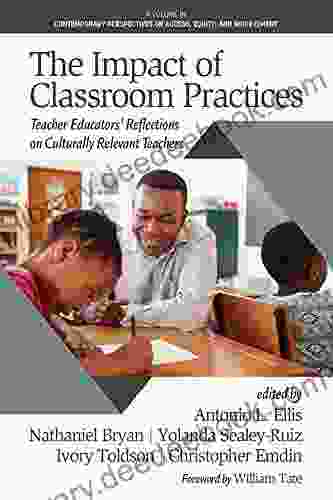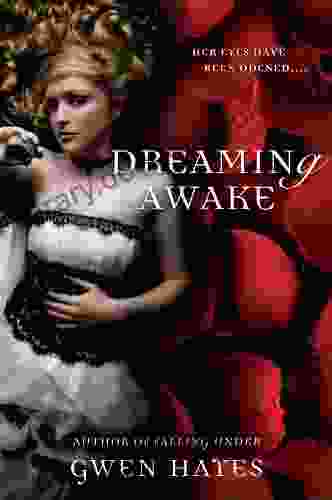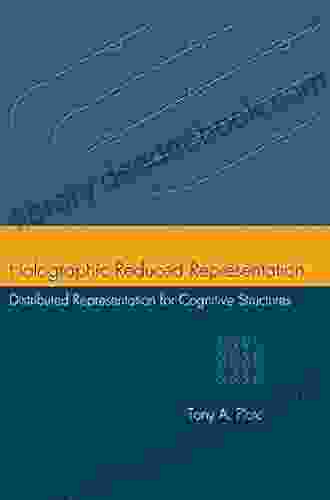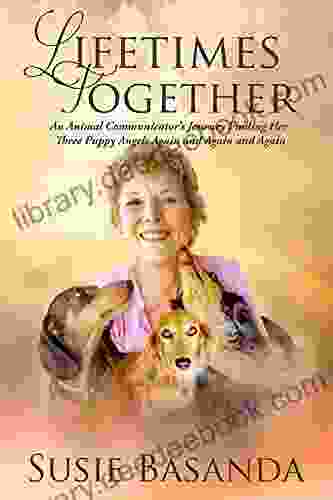Distributed Representation for Cognitive Structures: Lecture Notes 150

Distributed representation is a powerful technique for representing cognitive structures that have been applied to study how the brain represents and processes information including concepts categories schemas and other complex structures.
In essence cognitive structures are mental models of the world that allow us to make sense of our experiences and interact with our environment. They are composed of interconnected elements that represent different aspects of our knowledge and beliefs.
Distributed representation is a way of representing these structures in which each element is represented by a distributed pattern of activity across a network of units. This allows for a flexible and efficient representation that can be easily updated and modified as new information is learned.
5 out of 5
| Language | : | English |
| File size | : | 21615 KB |
| Screen Reader | : | Supported |
| Print length | : | 250 pages |
| Paperback | : | 39 pages |
| Item Weight | : | 3.84 ounces |
| Dimensions | : | 6 x 0.1 x 9 inches |
There are several benefits to using distributed representation for cognitive structures.
- Flexibility: Distributed representation is a flexible way to represent cognitive structures that can be easily updated and modified as new information is learned. This is because each element of a structure is represented by a distributed pattern of activity, which can be easily changed to reflect new knowledge.
- Efficiency: Distributed representation is an efficient way to represent cognitive structures, and it can be implemented in a variety of different ways. This makes it a practical approach for representing complex structures in a computer model.
- Robustness: Distributed representation is robust to noise and damage, which makes it a reliable way to represent cognitive structures. This is because the information about each element of a structure is distributed across a network of units, so even if some of these units are damaged, the structure can still be represented.
Distributed representation has been used to represent a variety of different cognitive structures, including:
- Concepts: Concepts are mental representations of objects, events, or ideas. They are typically represented by a distributed pattern of activity across a network of units in the brain.
- Categories: Categories are groups of objects, events, or ideas that share common features. They are typically represented by a distributed pattern of activity across a network of units in the brain.
- Schemas: Schemas are mental representations of knowledge about the world. They typically represent the relationships between different objects, events, or ideas.
Distributed representation has also been used to study how the brain represents and processes information, and it has been applied to a variety of different areas of cognitive science, including:
- Memory: Distributed representation has been used to study how memories are stored and retrieved in the brain.
- Attention: Distributed representation has been used to study how the brain attends to and processes information.
- Decision-making: Distributed representation has been used to study how the brain makes decisions.
Distributed representation is a powerful technique for representing cognitive structures. It is flexible, efficient, and robust and it can be used to represent a variety of different types of structures. Distributed representation has been used to study a variety of different areas of cognitive science, and it is a valuable tool for understanding how the brain represents and processes information.
5 out of 5
| Language | : | English |
| File size | : | 21615 KB |
| Screen Reader | : | Supported |
| Print length | : | 250 pages |
| Paperback | : | 39 pages |
| Item Weight | : | 3.84 ounces |
| Dimensions | : | 6 x 0.1 x 9 inches |
Do you want to contribute by writing guest posts on this blog?
Please contact us and send us a resume of previous articles that you have written.
 Page
Page Chapter
Chapter Story
Story Genre
Genre Library
Library Paperback
Paperback Paragraph
Paragraph Sentence
Sentence Bookmark
Bookmark Shelf
Shelf Glossary
Glossary Bibliography
Bibliography Preface
Preface Footnote
Footnote Manuscript
Manuscript Codex
Codex Tome
Tome Classics
Classics Library card
Library card Narrative
Narrative Memoir
Memoir Reference
Reference Encyclopedia
Encyclopedia Dictionary
Dictionary Resolution
Resolution Catalog
Catalog Card Catalog
Card Catalog Stacks
Stacks Archives
Archives Periodicals
Periodicals Scholarly
Scholarly Lending
Lending Academic
Academic Special Collections
Special Collections Interlibrary
Interlibrary Literacy
Literacy Storytelling
Storytelling Awards
Awards Reading List
Reading List Book Club
Book Club Jasmine Guillory
Jasmine Guillory D Brooklyn
D Brooklyn Carlo Mazzei
Carlo Mazzei Greta White
Greta White Jean Baptiste Coyos
Jean Baptiste Coyos Jessica Ramer
Jessica Ramer Darrell Issa
Darrell Issa J S Scott
J S Scott Ashley E Lucas
Ashley E Lucas Erich Hartfield
Erich Hartfield Barbara Ebel
Barbara Ebel Matson Taylor
Matson Taylor Malcolm C Searles
Malcolm C Searles Carl S Blyth
Carl S Blyth Sam Herting
Sam Herting Susan Pinner
Susan Pinner Print Replica Kindle Edition
Print Replica Kindle Edition Eugene H Ware
Eugene H Ware Mary Frances Winters
Mary Frances Winters Holly Black
Holly Black
Light bulbAdvertise smarter! Our strategic ad space ensures maximum exposure. Reserve your spot today!
 Blake KennedyFollow ·19.8k
Blake KennedyFollow ·19.8k Eddie PowellFollow ·14.3k
Eddie PowellFollow ·14.3k Joseph ConradFollow ·6.7k
Joseph ConradFollow ·6.7k Henry JamesFollow ·19.3k
Henry JamesFollow ·19.3k Jorge Luis BorgesFollow ·14.9k
Jorge Luis BorgesFollow ·14.9k Jerome PowellFollow ·8.8k
Jerome PowellFollow ·8.8k Caleb LongFollow ·3.4k
Caleb LongFollow ·3.4k Mikhail BulgakovFollow ·4.2k
Mikhail BulgakovFollow ·4.2k

 Ralph Ellison
Ralph EllisonHealth Care Global Viewpoints: Samantha Whiskey
Samantha Whiskey is a global health...

 Gabriel Garcia Marquez
Gabriel Garcia MarquezTeacher Educators' Reflections on Culturally Relevant...
In today's...

 Levi Powell
Levi PowellSustainable Project Management: The GPM Reference Guide...
In today's rapidly changing world,...

 Isaac Bell
Isaac BellThe Captivating World of "Dreaming Awake Falling Under"
A Journey Through...

 Clarence Brooks
Clarence BrooksGovernance Regulations Valuations Mergers And...
In today's complex and ever-changing...
5 out of 5
| Language | : | English |
| File size | : | 21615 KB |
| Screen Reader | : | Supported |
| Print length | : | 250 pages |
| Paperback | : | 39 pages |
| Item Weight | : | 3.84 ounces |
| Dimensions | : | 6 x 0.1 x 9 inches |













